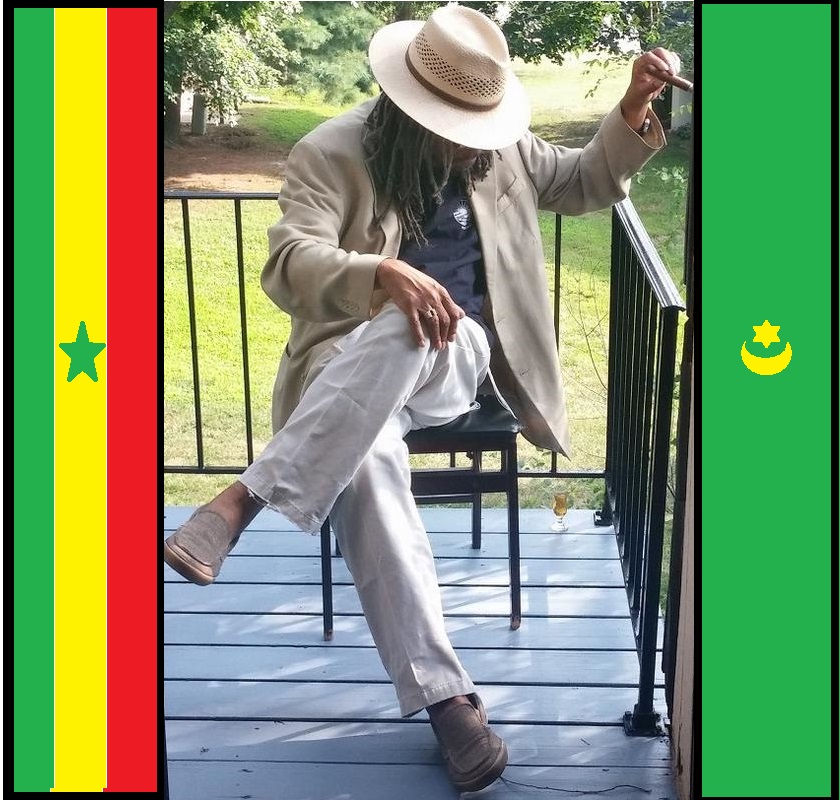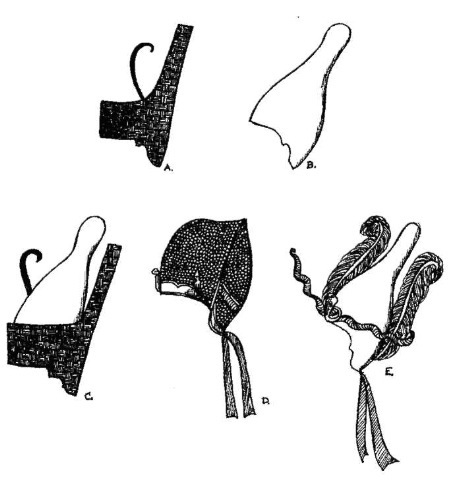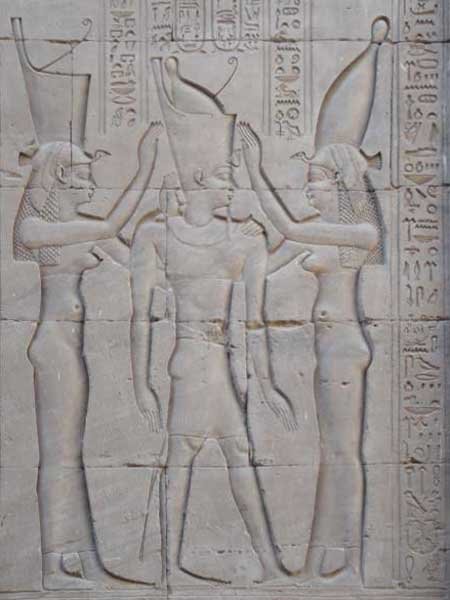|
|
Post by MorolongDithabeng on Aug 27, 2014 7:59:14 GMT -5
Before Isaac Newton, it was believed that white light was colorless, and that the prism itself produced the color. Newton's experiments demonstrated that all the colors already existed in the light in a heterogeneous fashion, and that "corpuscles" (particles) of light were fanned out because particles with different colors traveled with different speeds through the prism. It was only later that Young and Fresnel combined Newton's particle theory with Huygens' wave theory to show that color is the visible manifestation of light's wavelength. In optics, a prism is a transparent optical element with flat, polished surfaces that refract light. At least two of the flat surfaces must have an angle between them. The exact angles between the surfaces depend on the application. The traditional geometrical shape is that of a triangular prism with a triangular base and rectangular sides. Prisms can be made from any material that is transparent to the wavelengths for which they are designed, common materials include water, glass, plastic, and crystals (quartz,fluorite, calcite, aragonite material which makeup limestone). The body on Earth exist mostly as water, ranging from 90% at birth, +-70% adulthood and -50% at old age. Peter is referred to as a rock and the body a tent/obelisk. Water also refract white light into its visible spectrum(rainbow) and man being a conscious prism(obelisk) communicates/externalize this through use of material/aesthetics(hence the focus on material & non-material cuture), which explains why we associate the color red with holiness, power and a heightened spirituality. Read more: egyptsearchreloaded.proboards.com/thread/1686/tutankhamun-3d-recontruct#ixzz3767GhTrP![]() 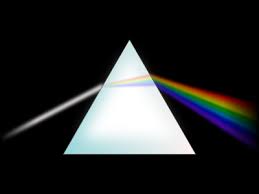  ![]()  The most abundant source of white light is the Sun, when it enters any material capable of dispersing it like water, the first color of the spectrum we see is red(blood), in Revelations of John, the Tent of Heaven is described as like red jasper, the Hogon Priest of Mali wears red on their head and a blue/indigo gown which is color of reflecting material form/water against its spiritual form/blue sky. Violet in most Bantu beliefs is considered a color of transition and the invisibility associated with a shadow, serving as a constant reminder that anything that cast a shadow will be dissolved into its original state/form. Attachments:
|
|
|
|
Post by MorolongDithabeng on Aug 27, 2014 8:00:28 GMT -5
|
|
|
|
Post by MorolongDithabeng on Aug 27, 2014 16:09:18 GMT -5
Meet Timothy and his cousin Dorothy, note the straight hair type  In the Bible, Moses spoke of the 6 days that God created the world and rested on the 7th day, the Sabbath which He ordered to be kept Holy and for no work to be carried out on this day. II Peter 3:8 "my loved ones, keep in mind this one thing, that with the Lord one day is the same as a thousand years, and a thousand years are no more than one day." Although still in its infancy, "Scientists" are now gradually beginning to understand this pulsation (heart beat) that shapes and characterizes planet Earth. Research has revealed that the African and South American rainforests display patterns of expansion and contraction over time. This slow habitat contraction (rest) appear to be short lived when compared with its expansion(creation). According to the bible even Evil is subject to this God rule/principle of rest: Revelation of John 20:2 "And he took the dragon, the old snake, which is the Evil One and Satan, and put chains on him for a thousand years, and cast him into the abyss, and shut it, and sealed it over him, that he should deceive the nations no more, until the thousand years were finished." Then there's this statement, Hebrews 4:5-10 For he spoke in a certain place of the seventh day on this wise, And God did rest the seventh day from all his works. And in this place again, If they shall enter into my rest. Seeing therefore it remains that some must enter therein, and they to whom it was first preached entered not in because of unbelief: Again, he limits a certain day, saying in David, To day, after so long a time; as it is said, To day if you will hear his voice, harden not your hearts. For if Joshua had given them rest, then would he not afterward have spoken of another day. There remains therefore a rest to the people of God. For he that is entered into his rest, he also has ceased from his own works, as God did from his. That to say the mind/thought that created the ancient world entered into a rest, this dark Age that is coming to an end soon.  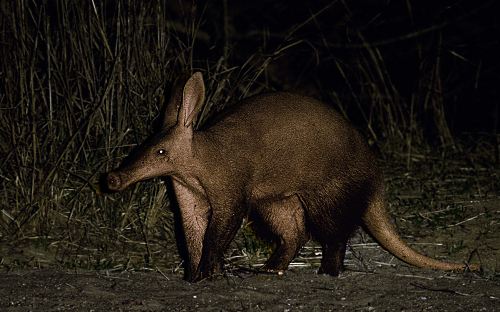 |
|
|
|
Post by anansi on Aug 28, 2014 4:53:36 GMT -5
Zarahan said True we cannot say they are one and the same although parallels exist,as to the great mother that may have had even older connections with Africa in general than Nile valley specific,I am speaking of the great suckling Goddesses giving nourishment to humankind often later represented in by Hathor Isis and Mary,if my hunch is correct the concept my have been carried out of Africa by a Khoisan type folk of Africa. 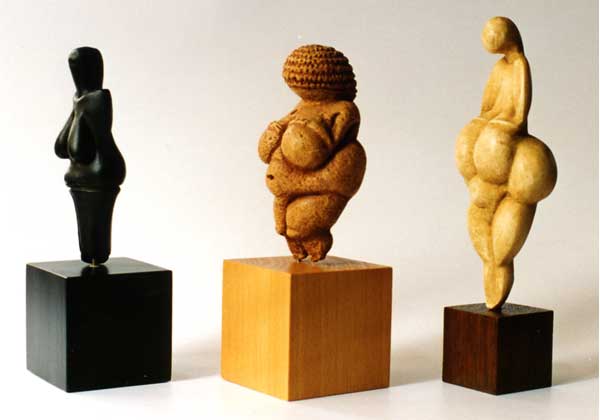   Recommend checking the link Also Ammon the Ram headed one would past into Europe by many means and later to be turned into the devil or Satan by Christians.  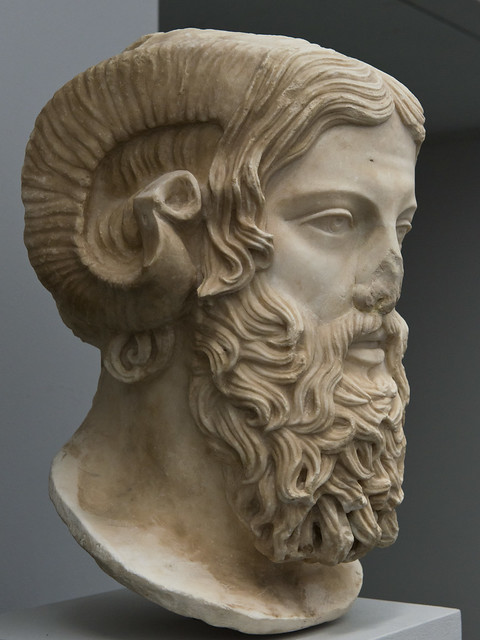 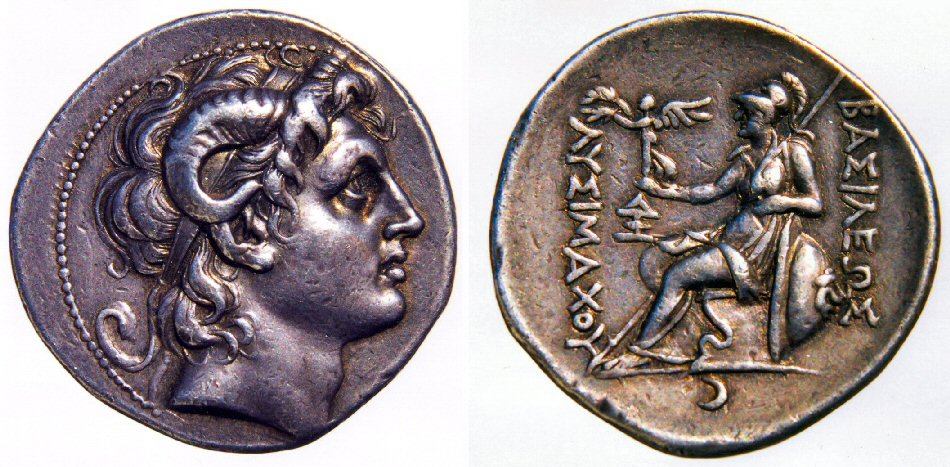 Deified with the ram's horns of Zeus-Ammon is Alexander,but the introduction of the horned one was reintroduced in Europe and other parts of the world by African magicians among the Moors of a later date. |
|
|
|
Post by MorolongDithabeng on Aug 28, 2014 16:04:33 GMT -5
I think your hunch is in tune The Egyptians may have brought back more than goods from Punt, for it has often been suggested that their well known pygmy god, Bes, may have also been a Punt import. It would seem probable that dwarfs and pygmies were indeed imported from Punt, for an inscription in the tomb of Harkhuf, and expedition leader under Pepy II, tells of his acquisition of a dwarf for that king. "It is the sacred region of God's Land; it is my place of distraction; I have made it for myself in order to cleanse my spirit, along with my mother, Hathor...the lady of Punt." Read more: www.touregypt.net/featurestories/punt.htm#ixzz3BinYAyR3      Sadly the people with this features can no longer be found, maybe as a result of the Nama Genocide carried out by German "anthropologists" in the name of science. Most were absorbed into the Xhosa tribes of South Africa who still bear some resmblance (very graphic material) www.ezakwantu.com/Gallery%20Herero%20and%20Namaqua%20Genocide.htm |
|
|
|
Post by MorolongDithabeng on Sept 4, 2014 10:13:08 GMT -5
Like many religions, at the center of the Abathwa/Barwa religion is the belief in a supreme God, known as Tsui, Giab, gangwan!an!a (big big god) also related to the Zulu/Swati 'Nkulunkulu' (big big one). He is responsible for life where he alone causes the sun to rise and the rain to fall. The opposer of this "good god" who lives in the east is an evil one who lives in the west, known as Gaunab or gangwas matse (small god). This "evil god" uses his superhuman power to cause sickness, misfortune, and death. This coexistence of good and evil is combined in the personality of Kaggen or cagn. Kaggen is represented by an Eland, a species of the family Bovidae and genus Taurotragus which is an animal created by and special to Kaggen. Antelope is the common name applied to a large group of cloven-footed, hollow-horned mammals belonging to the family (Bovidae), which includes cattle, goats and sheep   Writer David Chidester claims that Batwa of the Great Lakes forests religious belief centres around a supreme being named /a’an. This god is viewed as the benevolent creator of all things and is assisted by a lesser deity named /a’an ‘e la tleni (/a’an the small). Fact is, very little is known about the Batwa traditional animist religions   Khnum (Khnemu, Khenmu, Khenmew, Chnum) was one of the most ancient gods of Egypt, whose worship is thought to have been popular as early as the Predynastic Period. References from the Pyramid Texts of Unas confirm that his worship was long established even at that early stage and the Old Kingdom pharaoh Khufu (the builder of the Great Pyramid) was actually called "Khnum-Khufu" ("Khnum is his Protector"). According to one creation myth, Khnum moulded everything on his potters wheel/table, including both the people and the other gods. Khnum was one of the gods who was thought to have helped Ra on his perilous nocturnal journey through the underworld. It is also thought that he created the boat which carried Ra and helped defend the sun god against the serpent Apep (Apothis). Yet, he was sometimes considered to be the "ba" of Ra, because the word for "ram" in Egyptian was also "ba". His name derives from the root khnem, "to join, to unite," and with khnem, "to build"; astronomically the name refers to the "conjuction" of the sun and moon (I will be explained later on)   |
|
|
|
Post by MorolongDithabeng on Sept 4, 2014 16:28:52 GMT -5
Keratin is an extremely strong protein that is a major component in skin, hair, nails, hooves and horns. The amino acids which combine to form it have several unique properties and, depending on the levels of the various amino acids, it can be inflexible and hard, like horns, or soft, as is the case with skin. Most people interact with this tissue after it is actually dead; hair, skin, and nails are all formed from dead cells that the body sheds as new cells push up from underneath. Israelites where in Egypt for a considerable amount of time which makes one wonder what truly inspired the 'payot' side curls style, the two spirals.     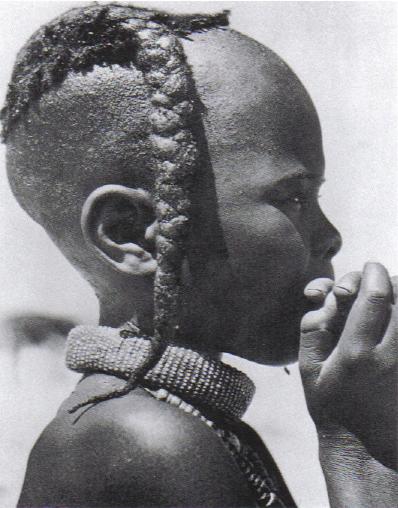    A shofar is a Jewish ritual instrument made from the horn of a ram or other kosher animal. It was used in ancient time to announce the New Moon (Rosh Chodesh) and call people together. There are legal requirements for what constitutes a proper shofar. The shofar of Rosh Hashanah, whose purpose it is to rouse the Divine in the listener, may not be constructed of an artificial instrument. It must be an instrument in its natural form and naturally hollow, through whom sound is produced by human breath, which God breathes into human beings. In the Bantu-Xitsonga tradition women initiates are given some beer to drink from a Kudu horn. This beer is said to be a remedy for any infertility which could happen to them during the initiation. It is believed that if the initiate does not drink this she might be in danger of not being able to bear children. |
|
|
|
Post by MorolongDithabeng on Sept 4, 2014 17:13:29 GMT -5
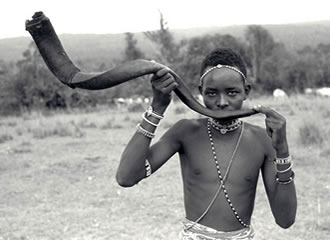    As per biblical records, after the fall of man and the cursing of the ground/earth the first thing to be grown from the cursed soil was the vine tree. Genesis 5:29 And he called his name Noah, saying, This same shall comfort us concerning our work and toil of our hands, because of the ground which the LORD has cursed. Genesis 9:20 In those days Noah became a farmer, and he made a vine-garden.    and in the New Testament Jesus Christ says John 15:1 I am the true vine, and my Father is the farmer. 5 I am the vine, you are the branches: he who is in me at all times as I am in him, gives much fruit, because without me you are able to do nothing. |
|
|
|
Post by Tukuler al~Takruri on Sept 4, 2014 20:17:33 GMT -5
I remember reading "Dedan" Kimathi's astonishment when comparing Kikuyu and Torah laws/customs, particularly vowing in regards to allowing the hair to mat into locks. For sure there are tight spiritual similarities amongst all the Rift Valley (Mozambique - Jordan) peoples but the posted horn blowing method of the Africans would in fact disqualify it from the Israel method, i.e. a hole bored in the side of a shofar makes it ritually unfit.     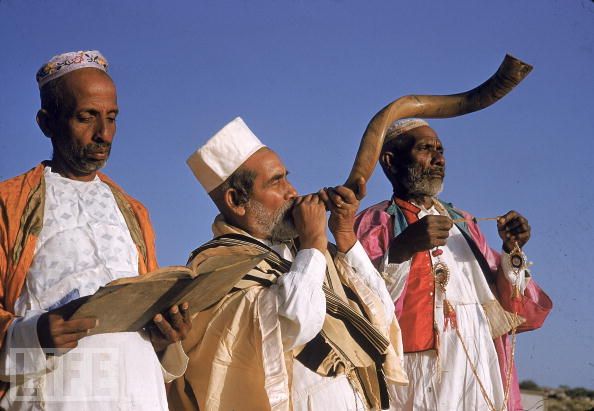 This last pic is one of the Indian groups of Jews. And just for fun here's the Prez with his rabbi Rabbi Capers Funnye the 1st Lady's cousin.  |
|
|
|
Post by MorolongDithabeng on Sept 5, 2014 8:26:37 GMT -5
Like the Zulu Sanusi (shaman) Credo Mutwa, Pablo Amaringo the ayahuasquero also states that "a plant may not talk, but there is a spirit in it that is conscious, that sees everything, which is the soul of the plant, its essence, what makes it alive." According to Amaringo these spirits are veritable beings, and humans are also filled with them: " Even the hair, the eyes, the ears are full of beings. You see all this when ayahuasca is strong." Ayahuasca, also commonly called yagé, is a psychedelic brew made out of Banisteriopsis caapi vine or Spirit vine.   In their visions, shamans take their consciousness down to the molecular level and gain access to information related to DNA, which they call "animate essences" or "spirits." This is where they see double helixes, twisted ladders, and chromosome shapes. This is how shamanic cultures have known for millennia that the vital principle is the same for all living beings, and is shaped like two entwined serpents (or a vine, a rope, ladder...). DNA is the source of their astonishing botanical and medicinal knowledge, which can be attained only in defocalized and "nonrational" states of consciousness, though its results are empirically verifiable. The myths of these cultures are filled with biological imagery, and the shamans metaphoric explanations correspond quite precisely to the descriptions that biologists are starting to provide. A thread of DNA is much smaller than the visible light humans perceive. Even the most powerful optical microscopes can not reveal it, because DNA is approximately 120 times narrower than the smallest wavelength of visible light. The nucleus of a cell is equivalent in volume to 2-millionths of a pinhead. The two-yard thread of DNA packs into this minute volume by coiling up endlessly on itself, thereby reconciling extreme length and infinitesimal smallness, like mythical serpents. In the early 1980s, thanks to the development of a sophisticated measuring device, a team of scientists demonstrated that the cells of all living beings emit photons at a rate of up to approximately 100 units per second and per square centimeter of surface area. They also showed that DNA was the source of this photon emission. The wavelength at which DNA emits these photons corresponds exactly to the narrow band of visible light: "Its spectral distribution ranges at least from infrared (at about 900 nanometers) to ultraviolet (up to about 200 nanometers)"...DNA emits photons with such regularity that researchers compare the phenomenon to an "ultra-weak laser." (see History of Biophotonics) Bearing in mind that human hair and animal horns consists of the same stuff, the above discoveries might be the answer that help explain the following symbologies: the sun/photons and the figurative depiction of the vine (hair and horns)  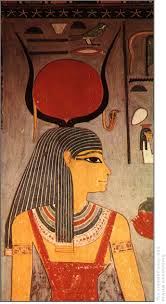   In addition to the use of a halo around the heads of biblical saints there are other symbolical relations. First is the unification or dissolving principle of two opposing forces. Jannes and Jambres, or sometimes Johanai and Mamre, or Iannes and Mambres, or Janis and Jamberes, are names traditionally given to the Egyptian magicians/sorcerers who contended with Moses and Aaron (II Timothy 3:8). Their snakes (the 2 Eland horns, double helix, dualism) were swallowed by that of Moses/Aaron. Moses is later on was instructed to make a bronze snake as a remedy for the snake plague which tormented the Israelites. I gather this is a representation of the human DNA whose frequency is subject to interruption which cause diseases/weakness. The Moses snake is further personified in the image of the Christ 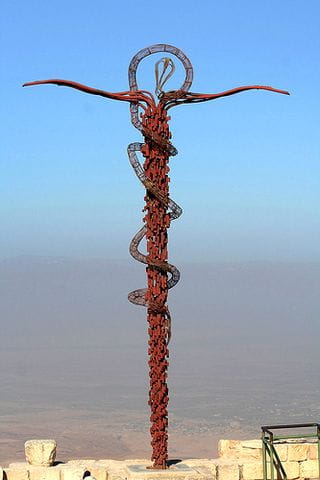  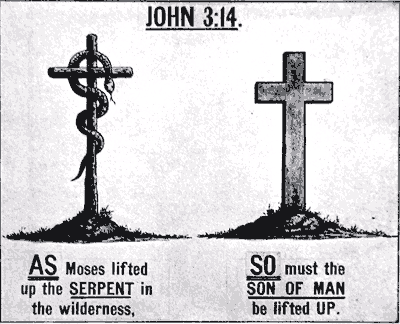  Napolo is a mythical serpent spirit that has never been a “mere mortal being” and believed to live in mountains and lakes. One of the symbols of this mythical creature is the Spiral sea shell locally known as Nkungwa and it’s shape. Apparently there is a place at the turn off to Phalombe somewhere in Mulanje where healers claim the Napolo spirit takes them up to the mythical realm of Sapitwa in less than five minutes. Now they claim when the whirlwind comes they hold up their hands up north to maintain their balance as the Great Spirit in their beliefs takes them up to the highest peak of the mountain…. agnesmizere80.wordpress.com/2014/06/08/of-ancient-malawis-aaron-serpent-rod-and-return-of-stolen-goods-sapitwa/ agnesmizere80.wordpress.com/2014/05/08/of-ancient-malawi-maths-sirius-star-and-sacred-trianglesapitwa/ agnesmizere80.wordpress.com/tag/sapitwa-healers/  www.keelynet.com/unclass/hardy1.htm www.keelynet.com/unclass/hardy1.htmOne does not need any fancy gadgets to proof the pyramid vortex effect. In a simple experiment conducted, we used a pyramid made of card-board with an old RC car motor attached at its base, the wily-wily wind suction effect is created by the spinning pyramid. |
|
|
|
Post by snakepit on Sept 7, 2014 6:58:27 GMT -5
Keratin is an extremely strong protein that is a major component in skin, hair, nails, hooves and horns. The amino acids which combine to form it have several unique properties and, depending on the levels of the various amino acids, it can be inflexible and hard, like horns, or soft, as is the case with skin. Most people interact with this tissue after it is actually dead; hair, skin, and nails are all formed from dead cells that the body sheds as new cells push up from underneath. Israelites where in Egypt for a considerable amount of time which makes one wonder what truly inspired the 'payot' side curls style, the two spirals.         A shofar is a Jewish ritual instrument made from the horn of a ram or other kosher animal. It was used in ancient time to announce the New Moon (Rosh Chodesh) and call people together. There are legal requirements for what constitutes a proper shofar. The shofar of Rosh Hashanah, whose purpose it is to rouse the Divine in the listener, may not be constructed of an artificial instrument. It must be an instrument in its natural form and naturally hollow, through whom sound is produced by human breath, which God breathes into human beings. In the Bantu-Xitsonga tradition women initiates are given some beer to drink from a Kudu horn. This beer is said to be a remedy for any infertility which could happen to them during the initiation. It is believed that if the initiate does not drink this she might be in danger of not being able to bear children. The ancestors of the two Khazars pictured above were never in Egypt. Hebrews are Africans, not European/Caucasian. The sidelock thing is their take on dreadlocks (their hair doesn't mat nearly as easily as ours) , which was/is a common hairstyle amongst Hebrews today. |
|
|
|
Post by MorolongDithabeng on Sept 9, 2014 16:54:17 GMT -5
There are many "Egypt was a Blck civilization" discussions goin on the net at any given moment but I find the topics in "Egyptsearchreloaded" very well structured, even though not always(that's where the likes of u come in). Except for a few disguised r@ts, members agree that Kemet was a Black civilization and bring forth what lead them to take this stance into the discussions/dialogues/debates you see. The topic in this case is "Egypt religion and its Biblical parallels" and not racial affinities or some other migration or ethnicity related subjects. Nevertheless a good but not well thought derailment, the above is on Payot, the shofar, keratin, the sun and their iconographic undertones. en.wikipedia.org/wiki/Payoten.wikipedia.org/wiki/Ashkenazi_Jews |
|
|
|
Post by anansi on Sept 12, 2014 6:36:02 GMT -5
|
|
|
|
Post by MorolongDithabeng on Sept 12, 2014 10:00:20 GMT -5
|
|
|
|
Post by MorolongDithabeng on Sept 12, 2014 17:44:52 GMT -5
The nutritional value and the appetite suppressant properties will require a deeper scientific analysis like the many conducted in South Africa on indigenous medicine/herbs. From a material and non-material cultural view point, this could be a marker for an older, long preserved indigenous knowledge system and well developed(advance) spiritual practice, worthy of visiting and formally documenting. The South African Herbal Science & Medicine Institute at the University of The western cape strives to be a world class research institution, focussed on scientifically and clinically unlocking the value of traditional medicines in the service of humanity. SAHSMI is located at the heart of one of the worlds most biodiverse hotspots an area which is known for its diversity of unique plant species and the historical richness of indigenous knowledge about their use in traditional medicines. If one could get a fresh and a dry sample of this reed, a simple comparative analysis for starters would definitely shed some light. One relevant case is the use of Hoodia spp. known by the indigenous peoples of Southern Africa, who infrequently use these plants for treating indigestion and small infections, but their use of the plant to suppress appetite on long hunting trips in the Kalahari Desert has stimulated the most interest. In 1977, the South African Council for Scientific and Industrial Research (CSIR) isolated the ingredient in hoodia—now known as P57—which is responsible for its appetite-suppressant effect, and patented it in 1996. The CSIR then granted United Kingdom-based Phytopharm a license, and they collaborated with the pharmaceutical company Pfizer to isolate active ingredients from the extracts and look into synthesizing them for use as an appetite suppressant. Pfizer released the rights to the primary ingredient in 2002. Paul Hutson, associate professor in the University of Wisconsin–Madison School of Pharmacy, told the Wisconsin State Journal, "For Pfizer to release something dealing with obesity suggests to me that they felt there was no merit to its oral use". Pfizer states that development on P57, the active ingredient of hoodia, was stopped due to the difficulty of synthesizing it. Jasjit Bindra, lead researcher for hoodia at Pfizer, states there were indications of unwanted effects on the liver caused by other components, which could not be easily removed from the supplement, adding, "Clearly, hoodia has a long way to go before it can earn approval from the Food and Drug Administration. Until safer formulations are developed, dieters should be wary of using it." "Hoodia gordonii is traditionally used by the San people (Barwa) of the Namib desert as an appetite suppressant as part of their indigenous knowledge about survival in the harsh desert conditions. In a well-known case of biopiracy, bioprospectors from South Africa’s Council for Scientific and Industrial Research (CSIR) realized that the plant was marketable and patented its use as an appetite suppressant without recognizing the Sans' traditional claims to the knowledge of the plant and its uses. The patent was later sold to Unilever, which marketed hoodia products as diet supplements. In 2003, the South African San Council made an agreement with CSIR in which they would receive from 6 to 8% of the revenue from the sale of Ho. gordonii products, money which would be deposited in a fund to purchase land for the San people who had been dispossessed from their lands by white settlers." www.phasa.org.za/workshops-at-phasa-2013/www.wits.ac.za/placesofinterest/lifesciencesmuseum/izangoma/indigenous%20healing/2887/introduction.htmltradmed.ukzn.ac.za/Home.aspx |
|
![]()


![]()









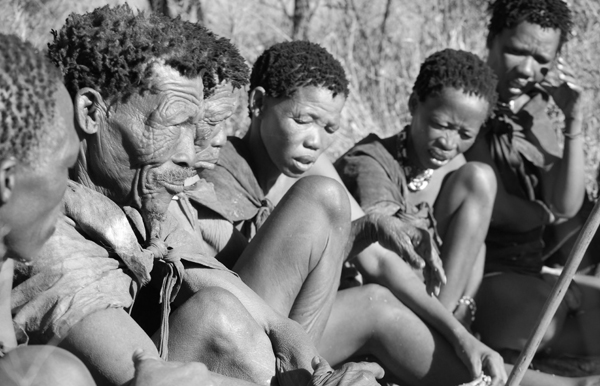



































 and in the New Testament Jesus Christ says John 15:1 I am the true vine, and my Father is the farmer. 5 I am the vine, you are the branches: he who is in me at all times as I am in him, gives much fruit, because without me you are able to do nothing.
and in the New Testament Jesus Christ says John 15:1 I am the true vine, and my Father is the farmer. 5 I am the vine, you are the branches: he who is in me at all times as I am in him, gives much fruit, because without me you are able to do nothing. 